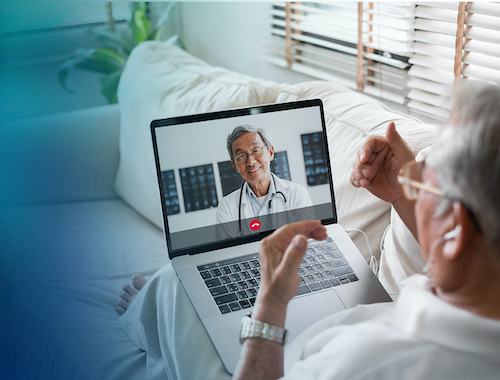Pre / Post Op Info
POST OP NASAL SURGERY INFORMATION
Small, soft plastic tubes with openings about the size of drinking straws are inserted in your nostrils during surgery, they are sutured in. Also, small tampons about half the size of a cigarette are beside these to cushion any swelling. There is no other removable packing, the rest at the openings to the sinuses is absorbably. These tubes allow you to breathe through your nose and allow drainage to come out for greater comfort. Breathe through your nose, don’t blow it, you may clean the openings of those tubes just inside of your nostrils with a Q-tip dipped in Peroxide, then sniff until you can breathe through them if your tubes get blocked.
- Use a cool air vaporizer or humidifier to help keep the secretions loose and to aid your breathing through your nose. A saline solution spray (Ocean Spray, OTC) can be used frequently during the day to keep the tubes clear, and should be used frequently (every hour while awake) after the tubes have been removed for the first few weeks if you are not sitting directly near the vaporizor.
- The tubes and tampons are removed in 3-4 days after surgery in the office. There is little discomfort associated with their removal unlike the discomfort associated with the removal of “packing” as done in the past. It is OK to take a pain pill prior to coming to the office to decrease the amount of anxiety which may be associated with this removal.
- It is normal to have some bleeding from your nose for 24-72 hours after surgery. There is a gauze drip pad under your nose to collect this nasal drainage. You may change this as needed or if the bleeding is more bothersome, then simply reinforce it to allow a clot to form with another gauze pad, and change both the next morning. You may also use a cotton ball soaked in Afrin to place in each nostril, then place the gauze pad, and last remove both in the morning for control of light nose bleeds.
- Ice compresses over the eyes or on the nose may also help to lessen any excess bleeding or swelling around the eyes if surgery to change the outside appearance of the nose (Rhinoplasty) was performed and you have a cast on the outside of your nose.
- Keep your head elevated at least 45-60 degrees all day by using pillows or a recliner, sleeping in a recliner at a 30 degree angle until the first office visit for tube removal will also lessen the amount of swelling and drainage.
- If you need to sneeze, do so with your mouth OPEN. DO NOT SUPPRESS THE SNEEZE. Do not forcefully blow your nose until after the second office visit, usually 10 days after surgery.
- Avoid bending, lifting anything heavy (over 10 pounds), or strenuous exercise for 10-14 days. No flying for the first 14 days after surgery.
- Take the pain medication prescribed as directed. Some pain medications relieve pain but can cause drowsiness or insomnia. No pain medicine can get rid of all of the pain but you can expect the nasal and sinus pain to be similar to the pain that you get with a sinus headache or infection. About 90% of our post op surgical patients will take the pain medicine regularly for the first 3-4 days until the first office visit. Most patients find the need for pain medicines to be much less or not needed at all after the first visit.
- DO NOT TAKE ANY ASPIRIN OR IBUPROFEN/NSAIDS CONTAINING PRODUCTS OR VITAMIN E FOR 1 WEEK BEFORE OR 2 WEEKS AFTER SURGERY SINCE THESE MAY ALL INCREASE BLEEDING.
- Do not drive, operate machinery, or ingest alcoholic beverages for 24 hours after surgery (or while taking pain medications).
- It usually takes from 8-24 hours for the effects of anesthesia to subside. Nausea is common for 24 hours and may be accompanied by vomiting. You will be given a prescription for Phenergan Suppositories which may be filled if you are prone to nausea or for your general comfort.
- Drink plenty of fluids. Drinking fluids in small amounts over longer periods of time, instead of gulping large amounts less frequently may also help prevent nausea.
- Your first post operative office visit has been made for you and was given at your preoperative appointment. If you forgot when this is, don’t hesitate to call the office the next day after your surgery.
- Begin using the “nasal flushing” technique using a baby bulb syringe and the “Salt Water Recipe” (1 teaspoon of salt per 8 ounces of warm water) or the NeilMed system after the first post operative visit. This nasal flushing can be repeated 3-5 times per day for the first 2 weeks after surgery, or you can gently sniff warm water from the shower or from the sink into your cupped hand as well (as often as you are comfortable with).
- Diet: you should stay with a liquid or soft diet for the first 8-12 hours after surgery or until the effects of the anesthesia have worn off, then resume a normal diet.
- You may experience some throat burning or pain for several hours after surgery which is very common and can be caused by the mucus or blood secretions from the surgery or from the effects of the anesthetic tube that was placed in your throat at the time of surgery. Cool liquids the first day should control this or you can start some warm salt water gargles the day after surgery if it is bothersome.
ITEMS TO HAVE ON HAND FOLLOWING SURGERY:
- Baby bulb syringe
- Afrin nasal spray
- Nasal saline solution (Ocean Mist, Ayr, or a generic brand).
For further information, please call Brandy or Angela during office hours at
770-979-8100 or 770-495-1955 during regular office hours or if you need prescription refills or questions.
IF YOU HAVE AN EMERGENCY SUCH AS EXCESSIVE BLEEDING AFTER OFFICE HOURS, PLEASE CALL THE OFFICE NUMBER AND THE ANSWERING SERVICE WILL DIRECT YOU TO THE NEAREST EMERGENCY ROOM AND WILL NOTIFY DR. GADLAGE OR DR. JONES OR THE DOCTOR ON CALL. THE EMERGENCY ROOM IS THE BEST PLACE TO HANDLE THESE SITUATIONS IF YOU THINK THIS IS AN EMERGENCY SO THAT YOU CAN BE EVALUATED AND TREATED WITH APPROPRIATE MEDICINES OR FURTHER CARE.
IF YOU HAVE WHAT YOU CONSIDER TO BE A LIFE THREATENING EMERGENCY AT ANY TIME, CALL 911 AND ALSO NOTIFY THE OFFICE SO YOU CARE CAN BE MONITORED AND MAXIMIZED.
POST OP SLEEP APNEA SURGERY INFORMATION
The recovery from Sleep Apnea surgery, known as UPPP (Uvulo-palato-pharyngoplasty) often includes removing the tonsils and for that reason, is an uncomfortable procedure for recovery. For that reason and for watching hydration and oxygenation, you will be admitted to the hospital overnight and observed closely in an Intermediate Medical Care Unit section of the hospital with continuous face shield humidification to ensure moisturization of your mucous membranes of the nose and throat. You will have a Pulmonary Medicine specialist consulted to monitor your lungs, heart and general medical status while in the hospital overnight, and determine if a temporary CPAP is necessary (less then 5% of patients). You will be able to go the the bathroom with assistance, shower if desired, but constant intake of liquids will be stressed (water, ice tea, popsicles, Gatorade for the first 24 hours, then milk products, ice cream, soups, soft diet OK the first day after surgery, avoid citrus and carbonated beverages. Dr. Gadlage suggests the use of egg drop soup as a good choice).
You will be discharged the morning after surgery (23 hour stay, though no specific time of discharge is required) and you will need to be driven home. You will be given antibiotics, pain medicines, nausea medicines in your pre-op visit, take them as indicated. Realistically, the pain medicine doesn’t totally relieve the pain but takes the “edge” of it off so you can drink more liquids, which is crucial for the 10 days of recovery, constantly drink liquids while awake. You are OK to take your usually prescribed medications the day after surgery as well, as long as they are not blood thinning agents, Aspirin, NSAIDS, vitamin C and E, etc listed in pre op information. This needs to be discussed thoroughly before surgery for clarification, and we may need to have your PCP or Cardiologist supervise these medicines.
You will be fitted with TED hose (anti-embolic stockings) in pre-op immediately before surgery, and it is recommended keeping these on at all times except when showering or bathing, for the first two weeks after surgery to help prevent blood clots since your activity will be restricted.
Keep your head elevated all day at least 60 degrees, sitting in a chair, and LIVE BY YOUR VAPORIZOR, the moisture is critical whether breathed in or in drinking liquids.
Three or four days after surgery, you will be seen back in the office for follow up, removal of any nasal tubes if necessary and general overall evaluation. You will then come back every one or two weeks for follow up, and if your liquid intake is not adequate, you will be given fluids intravenously to help you through this early stage. After your six week follow up, we will ask you to participate in our “Sleep Apnea Survey”, a series of short questions and recording of your weight change (most patients lose between 12-15 pounds in the first two weeks) to see how you fit in with the rest of our patients. We now have performed this surgery on over 1000 patients and this survey shows that 88% of our patients at 6 weeks, then again at one year, have no symptoms of sleep apnea, that is, no daytime sleepiness, no witnessed apnea spells by your spouse, and 85% have no snoring. If you have ANY of these symptoms at 6 weeks after surgery, we will suggest repeating your sleep study to see if further treatment is needed, but this occurs in our experience in 12% of our patients.
I have had this surgery performed myself and I can attest to the description of one of my patients who said it was “like he swallowed battery acid”, and though I never had, I can empathize with him and all my patients who have had this surgery, but when you have sleep apnea and can’t tolerate alternative treatments like lifetime weight control or CPAP, the medical complications associated with untreated sleep apnea are a worse option than the ten days of discomfort.
The overall quality of life improvement that we overwhelmingly see in our patients makes this unpleasant memory of the first ten days uniformly worth it.





